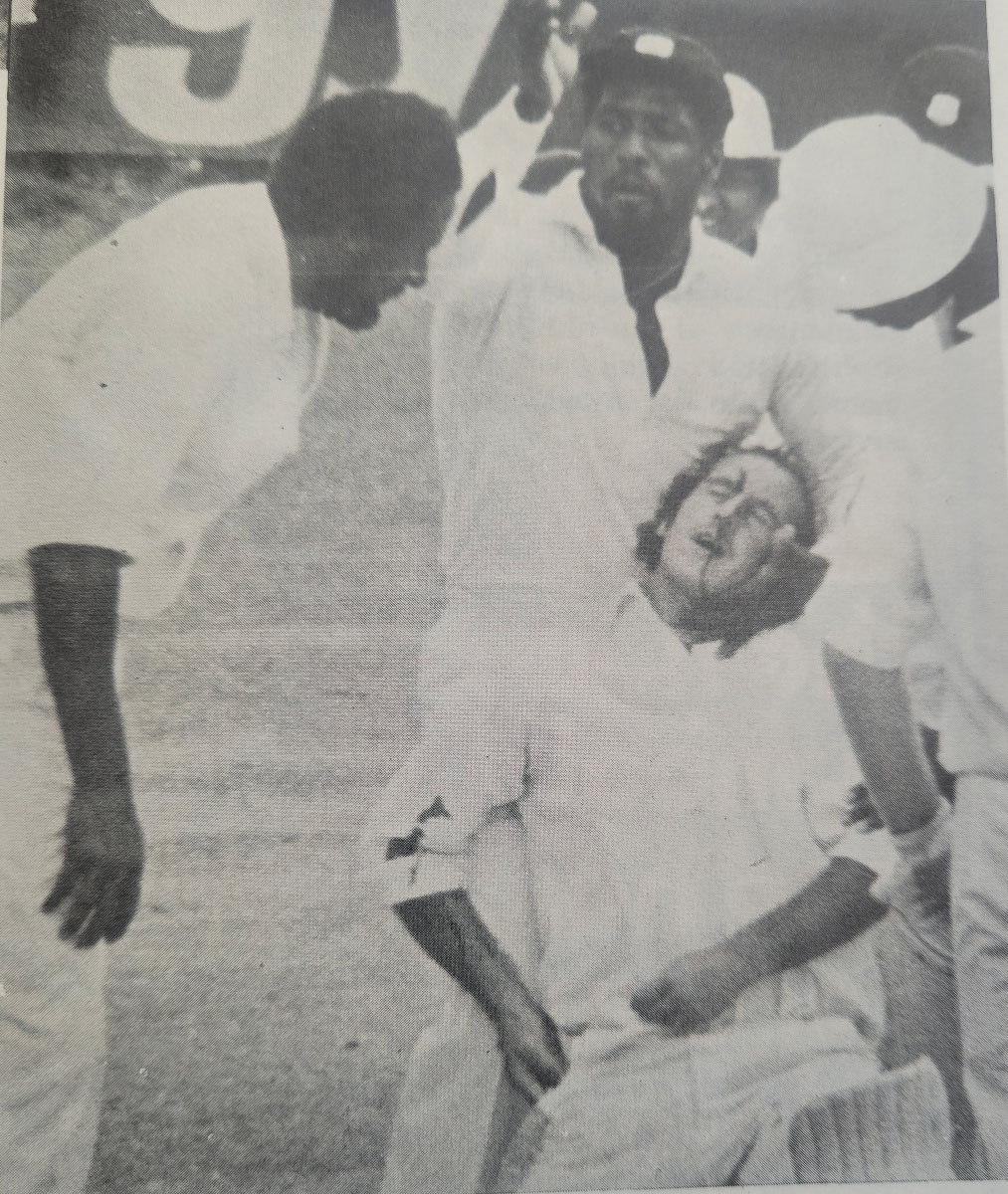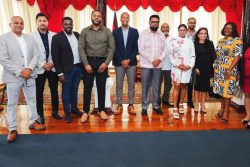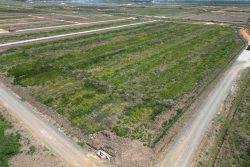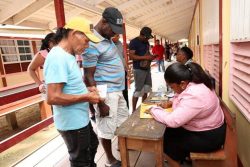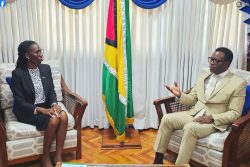The quiet man
On 21st June, 1975, the Summer Solstice, West Indies cricket fans were basking in the glow of the sun on the longest day of the year. Their team had just captured the inaugural Prudential World Cup. They were sitting on top of the world, and had few, if any, unanswered questions. Well, there was still the question of who really was this young fast bowler Andy Roberts, who had plummeted into the limelight the previous year.
Television coverage of cricket in the Caribbean was non-existent, and the Shield Shell Tournament – which spanned one month, 14th March to 14th April – had served as the entire first-class season since there was not a home Test series. Roberts was still an enigma to most of the region. One of the few insights came from an article in the cricket media guide released in the Caribbean, ‘The Players 1975’ published by Allied Printers Limited – the ads suggested that it was a Trinidad & Tobago publication. It was a reprint from a UK newspaper, The Guardian; ‘Andy Roberts’ by John Arlott, one of the leading English cricket commentators (broadcasting every England home Test match from 1946 to 1980), and writers, revealing the thoughts of a shrewd observer of the intricacies of the game.
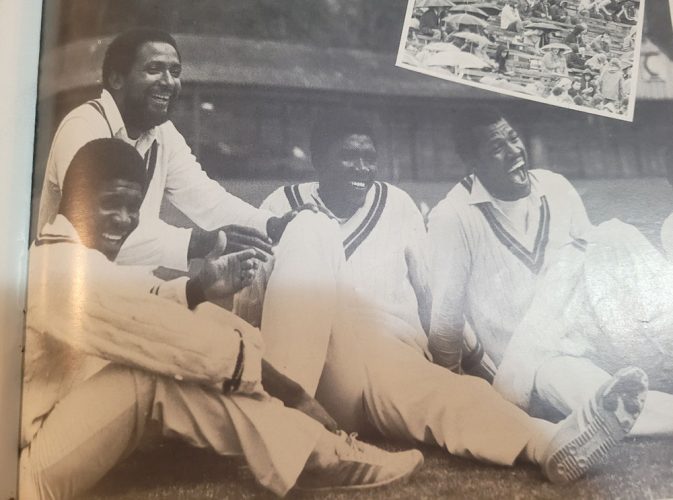
Below are a few excerpts of Arlott’s portrait of the Antiguan. It should be noted that Arlott was a Hampshire fan and might have been a bit biased.
“Anderson Montgomery Everton Roberts does not look like a fast bowler, certainly not a West Indian fast bowler. He has no such towering physique as Wesley Hall, Charlie Griffith; no such overt aggression as Roy Gilchrist; nor even the muscularity of Learie Constantine or Manny Martindale. [Arlott was blessed to have witnessed several generations of West Indian fast bowlers.]
“At 23 he is six feet tall but lithe in build, with a wiry rather than heavy strength. His manner is almost drowsily relaxed, his eyes languid, his voice soft. Yet, as a bowler, he is all cold, penetrating hostility.
“He was then [1973 Season with Hampshire Second XI] a fast but inaccurate bowler; now he is controlled to the point of precision even at his fullest speed.
“His mind works coolly and clearly behind his rather brooding look. He observes batsmen with the care of a slow: employs varied methods; has studied the mechanics of his cricket.
“He can now operate, according to the state of the pitch and conditions, off a 21, 19, or 15-yard run with only slight decrease in pace unless he deliberately bowls at medium pace.
“Fortunate in not carrying too much weight and, as yet, evincing none of the physical afflictions of the fast bowling trade, he should have quite eight years at high speed.
“In 1975 Andy Roberts is the rare combination of fire, settled physique and mature mind in a young fast bowler – and he is not yet at his peak.”
Arlott’s uncanny insight of Roberts’ character and predictions were strikingly accurate. Roberts continued to evolve, as a bowler and a cricketer, constantly modifying his mechanics and approach to the game. In his initial tour Down Under, 1975/76, Roberts formed a new-ball partnership with an emerging young talent, Michael Holding. Although the West Indies were demolished 5-1 by a four-prong pace attack, the harsh lesson was well learnt, and it was a sad, but much wiser, team that returned to the Caribbean. In the solitary Test victory, it was Roberts – with Holding out with a torn thigh muscle on the Fourth morning of the Second Test at Perth – who destroyed Australia’s second innings with seven for 54.
Comparisons
After disposing of a gallant English side in the sweltering summer of 1976, the duo of Roberts and Holding was immediately drawing comparisons to Hall and Griffith, the pair who spearheaded the West Indies attack in the 1960s. The English series was the cornerstone in the development of a fast bowling stable of genuine speedsters over the next two decades that would simultaneously serve as the scourge and envy of the cricketing world. In the Fourth Test at Leeds, the West Indies selected four fast bowlers: Roberts, Holding, Wayne Daniel and Vanburn Holder (the last could best be described as medium fast), in the mould of what they had faced the previous winter in Australia: Dennis Lillee, Jeff Thomson, Max Walker and Gary Gilmour. It was Roberts’ twentieth Test match and he duly collected his 100th Test scalp, in just over two years, the fastest ever. The same attack led the way in the Fifth Test at the Oval, as the visitors reeled off consecutive wins by 55 and 231 runs, respectively. The template was taking shape, the die was about to be cast.
The mantle of leading the pack was laid squarely on to the shoulders of the willing workhorse Roberts, who remained the one constant cog in the wheel of the West Indies’ engine room – save for the Packer Years, 1977-1979. As the West Indies pace attack evolved, Roberts and Holding were joined by Colin Croft and Joel Garner, in what is still arguably, the most effective quartet to represent the West Indies. Roberts, entrusted with the new ball, led from the front. No longer the fastest, ‘Fruity’ – as Roberts was known in Caribbean cricket circles, a sobriquet acquired from the name of “a drinks company” he worked for in Antigua – often led the late night prolonged discussions among the quartet, solving opposing batsmen.
“Once Fruity figured you out, you were done,” Croft once explained, in response to how they were able to dismiss Greg Chappell cheaply several times, including five ducks, during the 1981/82 series. Chappell had previously played several high scoring series against the West Indies. After plundering the West Indies pack attack during the 1983 series in the Caribbean, India’s Mohinder Amarnauth suffered a similar fate to ‘Chappello’ recording scores of 0, 0; 1, 0; 0, 0; in the First, Second and Fifth Tests respectively.
Durability
As bowlers lost form or suffered injuries and were unavailable complete series, the robust Roberts soldiered on, missing few Tests. The West Indies selectors, aware of the year-round load he bore as a full time professional cricketer, wisely rested him for the final two Tests of the four-match series against India in the 1976 home series, prior to the England tour. However, by 1980 the heavy toil of year-round cricket began to take its toll, as he missed the First Test in New Zealand (the controversial loss) with a tender hamstring, immediately following the first West Indies Test series win in Australia. After guiding the West Indies home to a narrow two wicket win in the First Test of the 1980 England Tour by scoring 22 not out at Trent Bridge, Roberts missed the final two Tests with an injury.
The West Indies selectors wisely rested him for the 1980 Pakistan Tour, where the pack of Croft, Joel Garner, Sylvester Clarke and Malcolm Marshall, gave such a commanding performance that Holding, injured for the First Test, could not find a place in the side for the other three Tests.
Roberts continued to defy Father Time, and duly regained his place for England’s 1981 visit to the Caribbean, rejoining Holding, Croft and Garner in the quartet, but after modest performances, was replaced by Marshall for the final Test in Jamaica. In the three Test series in Australia in 1981/82, Roberts was replaced by Clarke for the drawn Second Test at Sydney, but returned for the series-levelling win at Adelaide in the Third Test.
Roberts appeared in all five Tests of the 1983 home series versus India, conjuring a highly improbable victory in the first match in Jamaica (In Search of West Indies Cricket, ‘Magic at Sabina Park’, 2nd April 2023). His career came to a controversial end on the 1983 Tour of India, where he was injured for the first two Tests, but was not selected for the Third or Fourth Tests.
He returned for the Fifth Test at Calcutta, with a memorable performance. On the second morning, he snatched the final two Indian wickets to achieve 200 Test wickets in 46 Test matches, joining the elite company of Lance Gibbs (309) and Garry Sobers (235), as the only West Indians to reach that milestone.
On the third morning, Roberts joined Lloyd (71) in the middle, with the visitors tottering at 213 for eight, in reply to the hosts’ total of 241. Over the next three hours, the pair added 161, a new record for the ninth wicket for West Indies in Test matches, with Lloyd (161*) completing his 18th Test century and Roberts getting his highest ever Test score, 68.
The partnership swung the match entirely in favour of the West Indies, who won by an innings and 46 runs, with a day spare, with Roberts bowling wicket keeper Syed Kirmani to complete the formalities.
The win gave the visitors an unassailable 3-0 lead. The Sixth Test, Roberts’ last Test appearance, was a rain-affected draw.
In an interview in the March 2022 edition of ‘the Cricketer’ magazine, Roberts remembers that trip with these words, “Well, I’ll just say that I spoke up against the management of the team on the tour of India in 1983/84, the captain [Clive Lloyd] felt offended and I was sent home and never played for the West Indies again.”
Hit man
In the late 1980s, Roy Fredericks, the former West Indies and Guyanese opening batsman, was the guest speaker at one of the regular bi-monthly meetings of the Georgetown Lions Club at their den, which was located on the top floor of the Red Cross Headquarters (destroyed by fire in December 1996), on Barrack Street, Eve Leary, across from the Guyana Police Force Sports Club. Fredericks regaled the audience with cricketing anecdotes from his time in the game then invited questions from the floor. The first question poised to the legend was, “Was there a bowler … against whom, as an opening bat, you would exercise some caution …?”
“Andy Roberts,” the former opener instantly interjected, “ He could hit you at will…”
The list of batsmen struck by Andy Roberts is long and includes several Hall of Fame candidates. There was the famous 1974 Benson & Hedges Quarter Final clash between Hampshire and Somerset, when Roberts struck a young Ian Botham in the mouth, causing the loss of four teeth. Botham refused to leave the pitch, and guided Somerset to victory by one wicket, with an over to spare, after being 113 for eight, and requiring 70 in 15 overs. It was the introduction of Botham to the consciousness of the English public.
Others were not that lucky. In 1977, in the Third Test versus Pakistan on a slow pitch at Bourda, Roberts hit opener Sadiq Mohammad on the jaw in the second innings. Sadiq retired hurt, but managed to resume the next day with a badly swollen jaw. In the 1981 Shell Shield match between Guyana and the Combined Islands at Queen’s Park, Grenada, Roberts hit Alvin Kallicharran on his hand and broke a finger, ruling him out of the home series against England. Kallicharran never played again for the West Indies.
And then there was David Hookes. Hookes was the Golden Boy of Australian Cricket and one of the key signings for Kerry Packer’s World Series Cricket (WSC). Any thoughts that WSC was just entertainment and not competitive cricket were quickly erased on the 16th December, 1977, the first day of the Second Supertest. In the classic ‘The Cricket War’ Australian cricket writer Gideon Haigh captures the incident in graphic detail.
“As the South Australian [Hookes] recalls with the clarity of a road accident victim, the slow bouncer arrived. ‘Andy bowled me a ‘lolly gobble bliss bomb’ first up and I got that one away all right,’ he says. ‘But the next one made a mess of me.’
“A couple of feet shorter, several yards faster, it caught the hooking Hookes flush on the jaw despite his two hours at the crease, 81 runs and 14 fours. His head resounded, his body completing a full circle that ended in a semi-balletic swoon. ‘And,’ intoned [TV commentator Richie] Benaud gravely, ‘he’s in trouble.’”
Hookes had suffered a double fracture of the jaw and cheekbone. Packer, who had rushed his 22-year-old star to the nearest hospital in his Jaguar, placed a large order for helmets that night. World Series Cricket was legit.
Legacy
Andy Roberts’ contribution to West Indies cricket is difficult to quantify. The Herculean efforts on the field of play, which no doubt provided inspiration for hundreds of players in the Caribbean, especially the Leeward Islands, bore no boundaries. He has served as a coach, mentor, manager and selector of the Test side, even assisting with the preparation of pitches.
Roberts’ enduring legacy will be the highly competitive mindset he brought to the team along with a relentless work ethic to constantly refine the art of fast bowling. In his own words, from ‘the Cricketer’ interview, “I experimented for most of my career. I tried things other people wouldn’t dare to try… Plus I would jump a lot higher to get certain deliveries to rear up more. My variation was as much from 80 mph to 92 mph, with no discernible change of pace, grip or anything.”
Andy Roberts, always thinking, always working, always leading.
Note
Sir Andy Roberts was knighted on 28th February, 2014, by the Antiguan Government for his services to cricket.
